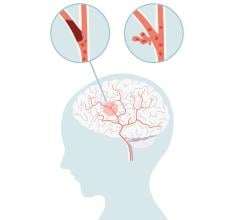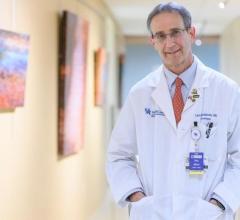
Getty Images
January 30, 2024 — Researchers from the Johns Hopkins Bloomberg School of Public Health have developed a single “universal risk prediction model” for cardiovascular disease that, in initial tests, works well for patients who already have cardiovascular disease as well as patients who do not but who may be at risk for developing it. Clinicians currently use two separate risk models to assess patients’ chances of having heart attacks, strokes, and other major cardiovascular events.
The new model uses a set of 10 factors including age, cigarette smoking status, diabetes status, and blood levels of several cardiac biomarkers, to gauge the risk of a new cardiovascular event, regardless of whether the patient has had one before. The researchers used a dataset covering nearly 10,000 participants over two decades to develop the new model, and a separate dataset to validate its accuracy.
“We think this new approach could streamline the risk-assessment process and related doctor-patient discussions, identify individuals who don’t yet have cardiovascular disease but have ‘cardiovascular disease equivalent’ risk, and provide more quantitative risk prediction compared to some current risk-prediction tools,” says study senior author Kunihiro Matsushita, MD, PhD, professor in the Bloomberg School’s Department of Epidemiology.
The new model, which ultimately could change how cardiovascular disease risk is assessed in doctors’ offices around the world, is described in a paper published online January 29 in the Journal of the American College of Cardiology. Parameters of the new model are available in the paper supplements.
The study’s first author was Yejin Mok, PhD, MPH, a research associate who is also in the Bloomberg School’s Department of Epidemiology.
A leading cause of death and disability, cardiovascular disease typically involves atherosclerotic arteries—those narrowed and stiffened by cholesterol—which are prone to develop blockages that cause heart attacks and strokes. Physicians use risk-prediction models for cardiovascular disease to assign interventions, including cholesterol-lowering drugs, which are among the most commonly prescribed categories of pharmaceuticals.
For decades, clinicians have used two general types of cardiovascular disease-related risk- prediction models, meant for two different preventive modes: the “primary” prevention of an initial cardiovascular event, and the “secondary” prevention of a new event after at least one has already occurred.
Secondary prevention risk calculators traditionally have focused on shorter-term risks following an initial event, and generally have assumed that all patients in this situation are at higher risk of a new cardiovascular event compared to patients who have never had one. Secondary prevention models have also been less quantitative in some of their risk classifications, using broad categories such as “high risk” as opposed to the specific risk numbers that primary-prevention risk models can generate.
In the past few decades, the availability of better treatments during and after initial cardiovascular events has begun to shift the emphasis toward longer-term risk prediction for cardiovascular disease patients. Reflecting this, some treatment guidelines for these patients now take into account factors such as diabetes and smoking status that are also used in primary-prevention risk assessment.
“We therefore wondered if a single set of predictors, based on traditional primary-prevention risk factors, could be used for both primary and secondary prevention,” Mok says.
In the study, the researchers examined the performance of established primary-prevention risk predictors in an existing dataset covering 9,138 participants from a long-term study called the Atherosclerosis Risk in Communities study (ARIC). The ARIC participants included some cases with established atherosclerotic cardiovascular disease and some without.
The scientists calculated the statistical links between these predictors and new major cardiovascular-related events—heart attacks, strokes, and heart failure—over a median follow-up period of 19.5 years. They determined that the new universal model performed well, and in most cases was not significantly different for participants who started out with cardiovascular disease compared to those who started out without it.
The researchers also used the ARIC dataset to identify the new universal risk model’s set of 10 strongly predictive and measurable factors that include age, smoking status, diabetes status, and three blood biomarkers.
The model predicted future risk accurately, the researchers found, and its risk predictions suggested a substantial overlap in risk levels between participants with cardiovascular disease and those without it.
“This overlap contrasts with the traditional picture of a wide gap in risk between the two groups,” Mok says.
Using a dataset from a different study, the Multi-Ethnic Study of Atherosclerosis, the team validated the accuracy of their model and overall findings.
Matsushita expects that further studies and discussions about this new universal risk prediction model will be necessary before it is broadly accepted, given how long the current approach has been in place. He emphasizes that this universal approach is simpler, more streamlined, and more uniformly quantitative than what exists now.
“We hope that our paper will help lead to a shift in thinking,” Matsushita says.
“Universal Risk Prediction for Individuals With and Without Atherosclerotic Cardiovascular Disease” was co-authored by Yejin Mok, Zeina Dardari, Yingying Sang, Xiao Hu, Michael Bancks, Lena Mathews, Ron Hoogeveen, Silvia Koton, Michael Blaha, Wendy Post, Christie Ballantyne, Josef Coresh, Wayne Rosamond, and Kunihiro Matsushita.
For more information: https://publichealth.jhu.edu/


 March 05, 2024
March 05, 2024 








